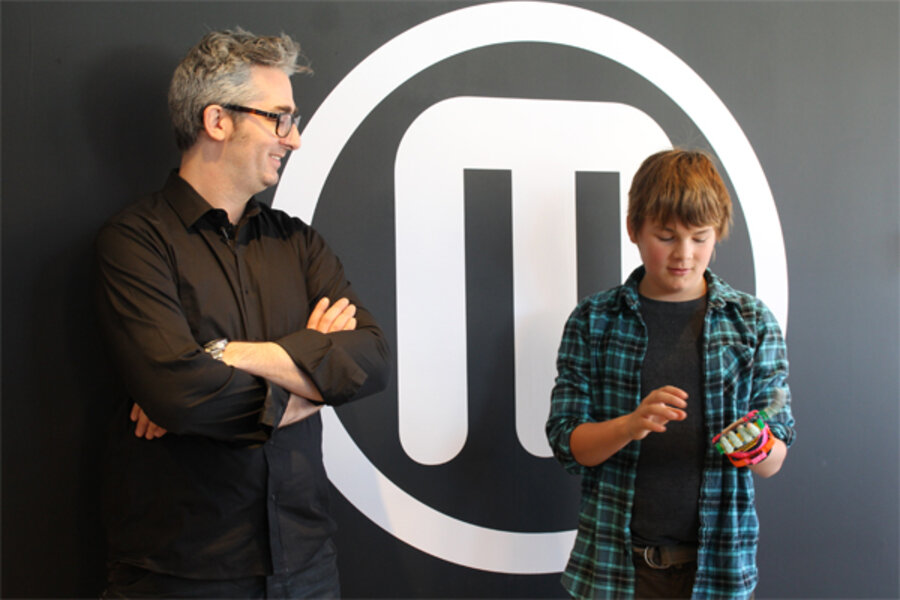3-D printer sales set to explode. So who is buying them?
Libraries have long been considered a house of books. But for Wadleigh Memorial Library in Milford, N.H., its mission has evolved to include 3-D printers and eventually a full maker space.
“Libraries are changing into spaces [where] you can create content, not just store content,” says library director Michelle Sampson. The Makerbot Replicator 2, the library's 3-D printer since August, is evidence of that change.
Children and adults alike have used the library’s 3-D printer to make plastic items such as cookie cutters, phone cases, and a replacement part for a broken toolbox. The library’s 3-D printer is available to everyone and, like its paper printer, costs a small amount to use.
Wadleigh Memorial Library is not alone. The shipment of 3-D printers worldwide is about to grow rapidly, according to research firm Gartner. Its forecast predicts that 3-D printer shipments will double annually for the next four years.
With 2,100-percent growth by 2018, who exactly will be buying and using all these new printers?
Pete Basiliere, research vice president at Gartner and lead analyst for its forecast on 3-D printing, points first to heavy manufacturers in the automobile, aerospace, and consumer-good industries. Historically, 3-D printers have been used for research and development in these industries, especially for making prototypes. In the medical field, 3-D printers offer a cheaper way to produce devices requiring mass customization, such as hearing aids.
But of the 2.3 million 3-D printer shipments expected for 2018, 1.8 million will be "sold mainly to consumers,” says Mr. Basiliere. He considers consumer-grade printers to be anything sold for less than $2,500, as opposed to the more expensive industrial 3-D printers used by heavy manufacturers.
Some of these “consumer” buyers will be “makers” setting up small businesses in their garages or using a 3-D printer as one of their tools. Others are simply enthusiasts with $500 to $2,500 to blow on a 3-D printer and see its value in making household items, knickknacks, and gifts. And some are institutions, such as public libraries and schools, that see the printers’ educational benefit.
While the 3-D printer market will grow rapidly, it’s starting from very small beginnings. Approximately 300,000 2-D paper printers are constructed every day, while the number of 3-D printers produced this year is only 108,000. One of the largest inhibitors to greater adoption of 3-D printers is the absence of “a real compelling application that can only be made on a 3-D printer,” says Basiliere. He predicts such an application might be uncovered by 2016.





